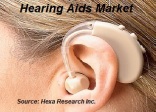Healthcare
Pharmacy Automation Devices Market to Witness 7.4% CAGR till 2020
The pharmacy automation devices market is anticipated to expand at a CAGR nearly 7.4% during the forecast period (2014 to 2020). Revenues may surpass USD 8 billion by 2020. Mechanical processes that are used in the handling and distribution of medications are known as pharmacy automation. Pharmacies employ automation in order to enhance cash flows and bring down medication inventories. Devices that facilitate these tasks are known as pharmacy automation devices. High incidence of medical error deaths is one of the key drivers of this industry.
Computerized physician order entry, EHR (electronic health record), and clinical decision support system are some of the commonly used devices. These help monitor patients on a regular basis so that their health conditions are better understood. High investments in research & development and growing popularity of medical automation may augment industry growth over the forecast period. Other market drivers are need for minimal medical errors, greater consciousness about advanced pharmacy, and high population growth. Furthermore, demand for minimally invasive surgical procedures with integrated medical automation could propel the industry in the forthcoming years.
In-Depth Market Research Report on “Pharmacy Automation Devices Market” Visit – https://www.hexaresearch.com/research-report/pharmacy-automation-device-industry
Applications, end-use, and regions are the three parameters based on which the global pharmacy automation devices market is categorized. Based on applications, the segments are automated medication dispensing systems, automated medication & compounding systems, automated storage & retrieval systems, table top tablet counters, and automated packaging & labeling systems. Packaging & labeling instruments mainly include deblistering machines, sealers, printing solutions, and fillers & sealers.
Automated medication dispensing systems enable computer controlled storage, tracking, dispensation, and the efficient recording of medical works. This segment held the highest market share in 2013. Unlike small sized hospitals that face budgetary constraints, highly established & large hospitals mainly adopt automated medication dispensing systems. Dispensing cabinets help healthcare practitioners to provide medications in a systematic manner and keep a record of the same in the overall system.
Retail pharmacy and hospital pharmacy are the two main end-users in the overall industry. Owing to robust investments, the hospital pharmacy segment may witness remarkable growth till 2020. It is sub-segmented into central pharmacy automation solutions, pharmacy robots, barcode medication dispensing, and point-of-care automation solutions among others.
Geographically, the worldwide pharmacy automation devices industry is divided into Asia Pacific, North America, Europe, and Rest of the World. In revenue terms, North America dominated the overall industry in 2013. Regional drivers are technological developments, the need for minimal medical errors, and a rapidly growing aging population. Asia Pacific is projected to be the fastest growing region in the forecast period. Factors that could positively impact the region are high income levels and greater awareness about the benefits of medical automation.
Prominent players in the global Pharmacy Automation Devices Market are Innovation PharmaAssist Robotics, Pyxis Pharmacy Automation Systems, McKesson Corporation, CareFusion Corporation, Accu Chart Healthcare, and Swisslog Holding Ltd. TCGRx, a Wisconsin based company dealing in pharmacy automation declared the development of PillBot™ in November 2016. PillBot™ is a pharmacy automation device that enables the filling of multi-dose and unit-dose cards in addition to pouch packaging. It can efficiently package medicines in blister formats as well as in pouch formats. The product will soon be launched this year.
To get free sample request on:
https://www.hexaresearch.com/research-report/pharmacy-automation-device-industry/request-sample
 Rapid technological advancements are taking place in this market. The most recent innovations being the incorporation of Bluetooth and the introduction of aesthetically appealing, 100% undetectable, waterproof hearing aids. All these advancements have been optimistic for the growth of the market as the new enhanced, cost-effective product features are augmenting a number of users of these devices.
Rapid technological advancements are taking place in this market. The most recent innovations being the incorporation of Bluetooth and the introduction of aesthetically appealing, 100% undetectable, waterproof hearing aids. All these advancements have been optimistic for the growth of the market as the new enhanced, cost-effective product features are augmenting a number of users of these devices.